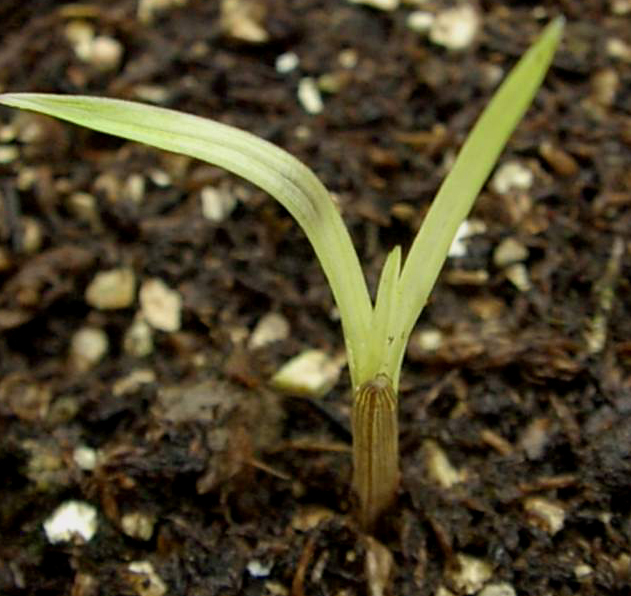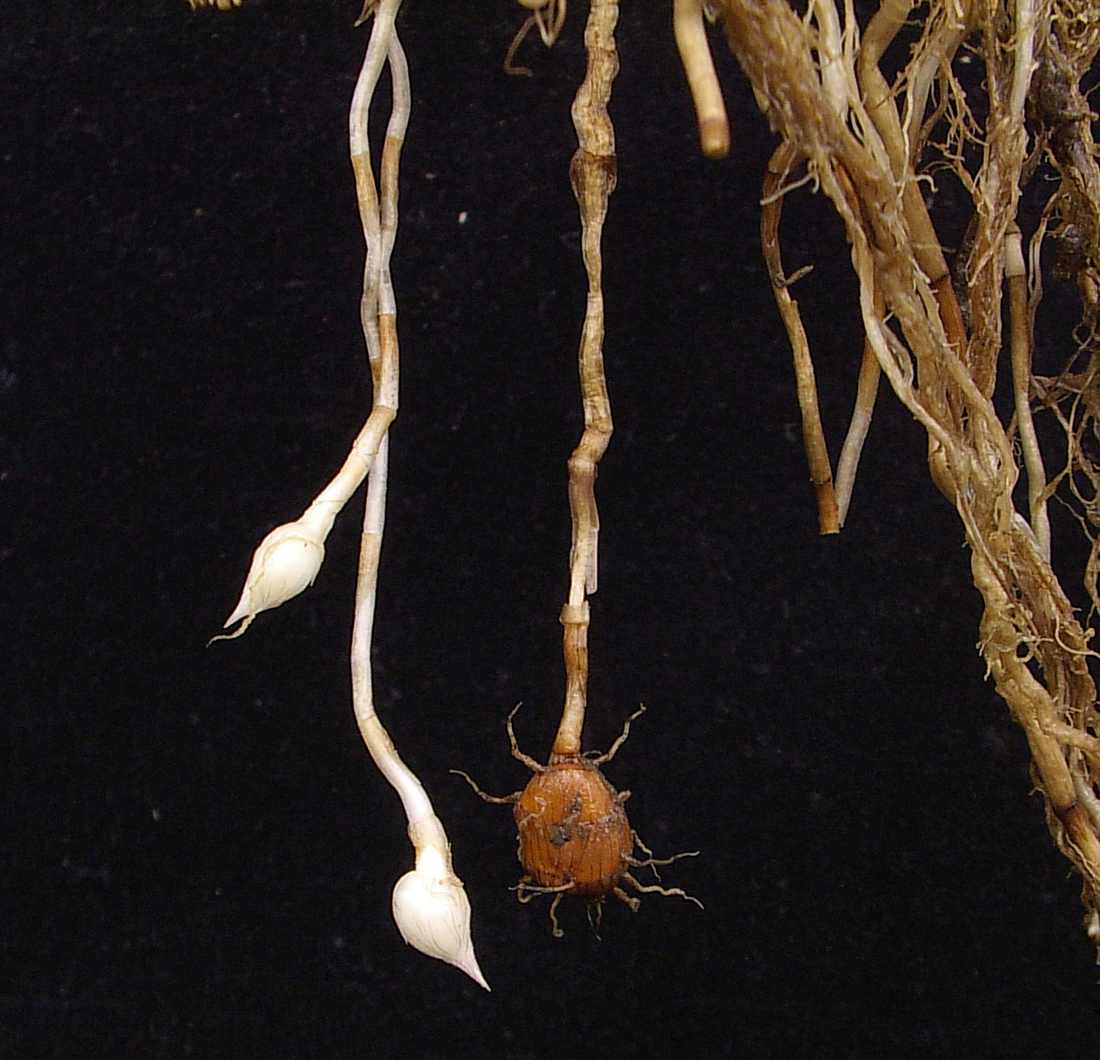Yellow Nutsedge
- Grass (Sedge family):
- Cyperus esculentus L.
- EPPO code:
- CYPES
- Other names:
- Chufa, earth almond, ground almond, nut grass, yellow nut-grass, northern nut-grass
Species information
- Lifecycle:
- Perennial.
- Propagation:
- Reproduces by seed, rhizomes and tubers. While the rhizomes allow a patch to expand, the tubers overwinter to produce new plants the following season. In Ontario conditions, seeds rarely produce new seedlings.
- Emergence:
- Throughout the season, shoots emerge from both the tubers and rhizomes.
- Habitat:
- Yellow nutsedge is common throughout Ontario in cultivated fields, pastures, lawns and gardens.
- Competitiveness:
- Agriculture and Agri-Food Canada research has shown that yellow nutsedge densities of 20,000 plants/ac can result in a 7% yield loss in corn and soybeans.
Identification clues
- Main tip:
- To identify yellow nutsedge, feel the base of the plant with your thumb and index finger. You should feel three distinct sides that form a triangle.
- Leaf blade:
- The leaf blades of yellow nutsedge are hairless with prominent midribs; leaves are numerous at the base of the plant.
- Leaf sheath:
- Leaf sheaths are closed and form a triangle shape around the stem.
- Seed heads:
- Seed heads appear as a cluster of yellowish to brownish branches at the tip of the stem.
- Roots:
- Yellow nutsedge plants produce extensive, whitish to light brown rhizomes.
- Tubers:
- Located at the tip of the rhizome, newly formed tubers are white, but turn dark brown as they mature. Yellow nutsedge tubers are edible and sometimes referred to as “tiger nuts.”





Updated: January 13, 2023
Published: January 13, 2023